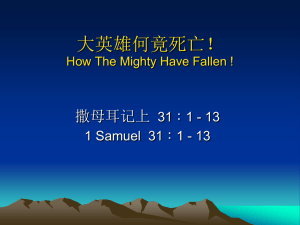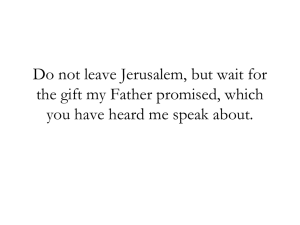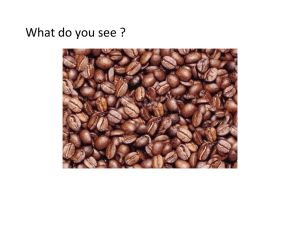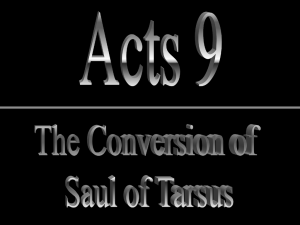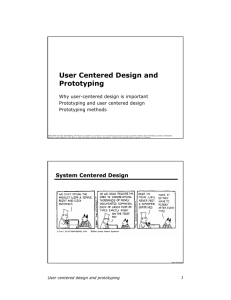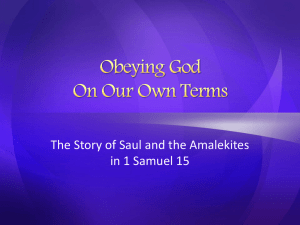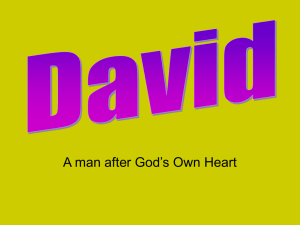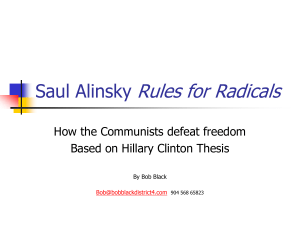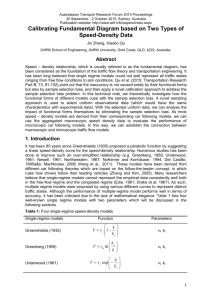Prototyping
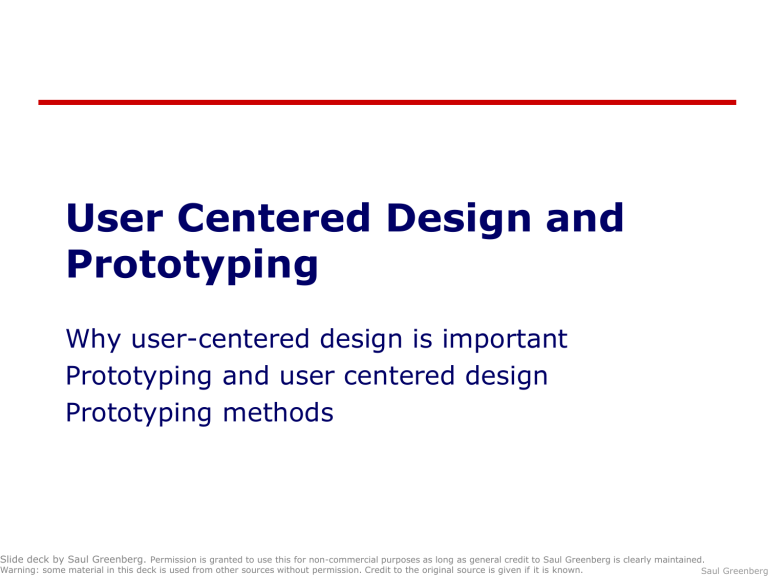
User Centered Design and
Prototyping
Why user-centered design is important
Prototyping and user centered design
Prototyping methods
Slide deck by Saul Greenberg. Permission is granted to use this for non-commercial purposes as long as general credit to Saul Greenberg is clearly maintained.
Warning: some material in this deck is used from other sources without permission. Credit to the original source is given if it is known.
Saul Greenberg
Sketching and Prototyping
Sketches / low / medium / high fidelity prototypes
– as investment in design increases (red arrow), so does the formality of the criteria whereby concepts are reviewed or accepted
From design to evaluation
– similarly, interface design
(idea generation) progresses to usability testing (idea debugging and refinement)
From Design for the Wild, Bill Buxton (in press) with permission
Saul Greenberg
Sketching and Prototyping
Early design
Brainstorm different representations
Choose a representation
Rough out interface style
Sketches & low fidelity paper prototypes
Task centered walkthrough and redesign
Medium fidelity prototypes
Fine tune interface, screen design
Heuristic evaluation and redesign
Usability testing and redesign
High fidelity prototypes
Limited field testing
Alpha/Beta tests
Working systems
Late design
Saul Greenberg
Sketches
– drawing of the outward appearance of the intended system
– crudity means people concentrate on high level concepts
– but hard to envision a dialog ’ s progression
Computer Telephone
Last Name:
First Name:
Phone:
Place Call Help
Saul Greenberg
Saul Greenberg
Saul Greenberg
Storyboarding
– a series of key frames as sketches
• originally from film; used to get the idea of a scene
• snapshots of the interface at particular points in the interaction
– users can evaluate quickly the direction the interface is heading
Excerpts from Disney ’ s Robin Hood storyboard, www.animaart.com/Cellar/disneyart/90robin%20storyboard.jpg.html
Saul Greenberg
note how each scene in this storyboard is annotated
From www.michaelborkowski.com/storyboards/images/big_bigguy1.gif
Saul Greenberg
Initial screen
Change the color ->
Scan the stroller ->
Place the order ->
Saul Greenberg
Alternate path…
Touch previous item ->
Scan the shirt ->
Delete that item->
Saul Greenberg
Storyboarding
Spotlight: an interactive foam core and paper sketch/storyboard
Credit: Sue-Tze Tan, Dept Industrial Design, University of Washington
From Design for the Wild, Bill Buxton
(in press) with permission
Saul Greenberg
PICTIVE
(Plastic Interface for Collaborative Technology Initiatives through Video Exploration)
Can pre-make paper interface components buttons menu alert box combo box tabs list box entries
Saul Greenberg
Limiting prototype functionality
vertical prototypes
– includes in-depth functionality for only a few selected features
– common design ideas can be tested in depth horizontal prototypes
– the entire surface interface with no underlying functionality
– a simulation; no real work can be performed scenario
– scripts of particular fixed uses of the system; no deviation allowed
Horizontal prototype
Scenario
Vertical prototype
Nielsen, J. (1993) Usability Engineering, p93-101, Academic Press.
Full interface
Saul Greenberg
Can use painting/drawing packages
draw each storyboard scene on computer
– very thin horizontal prototype
– does not capture the interaction “ feel ”
Control panel for pump 2
Shut Down coolant flow 45 % retardant 20% speed 100% next drawing
(for shut down condition)
Control panel for pump 2
DANGER!
coolant flow 0 % retardant 20% speed 100%
Shut Down
Saul Greenberg
Scripted simulations
create storyboard with media tools
– scene transition activated by simple user inputs
– a simple vertical prototype user given a very tight script/task to follow
– appears to behave as a real system
– script deviations blow the simulation
DANGER!
Saul Greenberg
Saul Greenberg
Saul Greenberg
Saul Greenberg
Saul Greenberg
Interface builders
Design tools for laying out common widgets excellent for showing look and feel
– a broader horizontal prototype
– but constrained to widget library vertical functionality added selectively
– through programming
Saul Greenberg
Wizard of Oz
A method of testing a system that does not exist
– the listening typewriter, IBM 1984
Dear Henry
What the user sees
From Gould, Conti & Hovanvecz, Comm ACM 26(4) 1983.
Speech
Computer
Saul Greenberg
Wizard of Oz
A method of testing a system that does not exist
– the listening typewriter, IBM 1984
Dear
Henry
Dear Henry
What the user sees
From Gould, Conti & Hovanvecz, Comm ACM 26(4) 1983.
Speech
Computer
The wizard
Saul Greenberg
